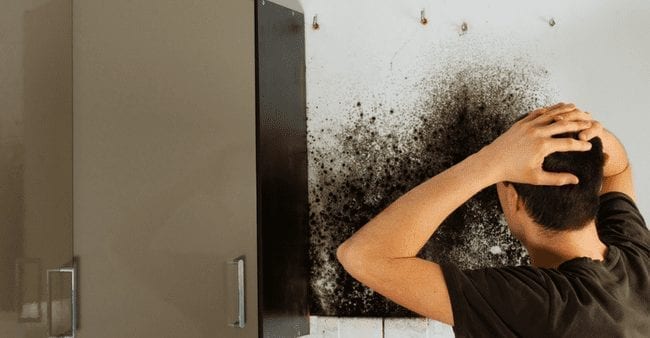Unveiling Hidden Water Line Leaks: Six Useful Detection Tricks
Unveiling Hidden Water Line Leaks: Six Useful Detection Tricks
Blog Article
This post below involving Hacks to detect leaks is quite fascinating. Have a go and make your own personal results.

Early detection of leaking water lines can mitigate a prospective disaster. In addition to saving you cash, it will certainly reduce the stress and disappointment. The minute you find a leakage, calling your plumber for repairs is the very best remedy. Nonetheless, some small water leakages might not be visible. If you can not discover it with your naked eyes, here are some hacks that assist.
1. Examine the Water Meter
Every home has a water meter. Inspecting it is a proven manner in which aids you discover leaks. For starters, turn off all the water sources. Make certain no person will flush, use the faucet, shower, run the washing machine or dishwasher. From there, go to the meter as well as watch if it will certainly transform. Given that no person is utilizing it, there should be no movements. If it moves, that suggests a fast-moving leakage. If you spot no modifications, wait an hour or two as well as inspect back once again. This indicates you might have a sluggish leakage that can also be below ground.
2. Check Water Usage
Examine your water bills and track your water consumption. As the one paying it, you need to observe if there are any discrepancies. If you detect sudden changes, despite your consumption coinciding, it suggests that you have leaks in your plumbing system. Keep in mind, your water costs ought to drop under the exact same array each month. An unexpected spike in your expense indicates a fast-moving leakage.
A constant rise every month, even with the same behaviors, shows you have a slow-moving leak that's additionally slowly rising. Call a plumber to thoroughly examine your home, especially if you really feel a cozy area on your flooring with piping underneath.
3. Do a Food Coloring Test
30% comes from toilets when it comes to water usage. Examination to see if they are running correctly. Decrease flecks of food color in the storage tank and also wait 10 minutes. If the shade somehow infiltrates your bowl throughout that time without flushing, there's a leak between the container and bowl.
4. Asses Outside Lines
Do not fail to remember to check your exterior water lines as well. Test faucets by attaching a yard hose pipe. Needs to water permeate out of the link, you have a loosened rubber gasket. Change this and also ensure all links are limited. It will assist obtain it skillfully examined and preserved every year if you have actually obtained a lawn sprinkler system. One small leakage can lose lots of water and also increase your water costs.
5. Inspect and also Analyze the Situation
Home owners need to make it a routine to inspect under the sink counters as well as also inside cupboards for any bad odor or mold development. These 2 red flags indicate a leak so punctual interest is called for. Doing routine evaluations, even bi-annually, can conserve you from a significant issue.
Examine for discolorations and also compromising as a lot of pipes as well as appliances have a life expectations. If you think dripping water lines in your plumbing system, don't wait for it to rise.
Early detection of dripping water lines can mitigate a prospective calamity. Some tiny water leakages might not be visible. Inspecting it is a surefire means that helps you find leakages. One tiny leak can lose tons of water as well as increase your water expense.
If you presume leaking water lines in your plumbing system, do not wait for it to escalate.
WARNING SIGNS OF WATER LEAKAGE BEHIND THE WALL
PERSISTENT MUSTY ODORS
As water slowly drips from a leaky pipe inside the wall, flooring and sheetrock stay damp and develop an odor similar to wet cardboard. It generates a musty smell that can help you find hidden leaks.
MOLD IN UNUSUAL AREAS
Mold usually grows in wet areas like kitchens, baths and laundry rooms. If you spot the stuff on walls or baseboards in other rooms of the house, it’s a good indicator of undetected water leaks.
STAINS THAT GROW
When mold thrives around a leaky pipe, it sometimes takes hold on the inside surface of the affected wall. A growing stain on otherwise clean sheetrock is often your sign of a hidden plumbing problem.
PEELING OR BUBBLING WALLPAPER / PAINT
This clue is easy to miss in rooms that don’t get much use. When you see wallpaper separating along seams or paint bubbling or flaking off the wall, blame sheetrock that stays wet because of an undetected leak.
BUCKLED CEILINGS AND STAINED FLOORS
If ceilings or floors in bathrooms, kitchens or laundry areas develop structural problems, don’t rule out constant damp inside the walls. Wet sheetrock can affect adjacent framing, flooring and ceilings.
https://www.servicemasterbyzaba.com/blog/how-to-detect-water-leakage-in-walls/

I was guided to that editorial about Hacks to detect leaks from an acquaintance on another website. Do you know anybody else who is enthusiastic about the subject? Feel free to promote it. We appreciate reading our article about Top leak detection hacks.
Plumbing excellence awaits. Report this page